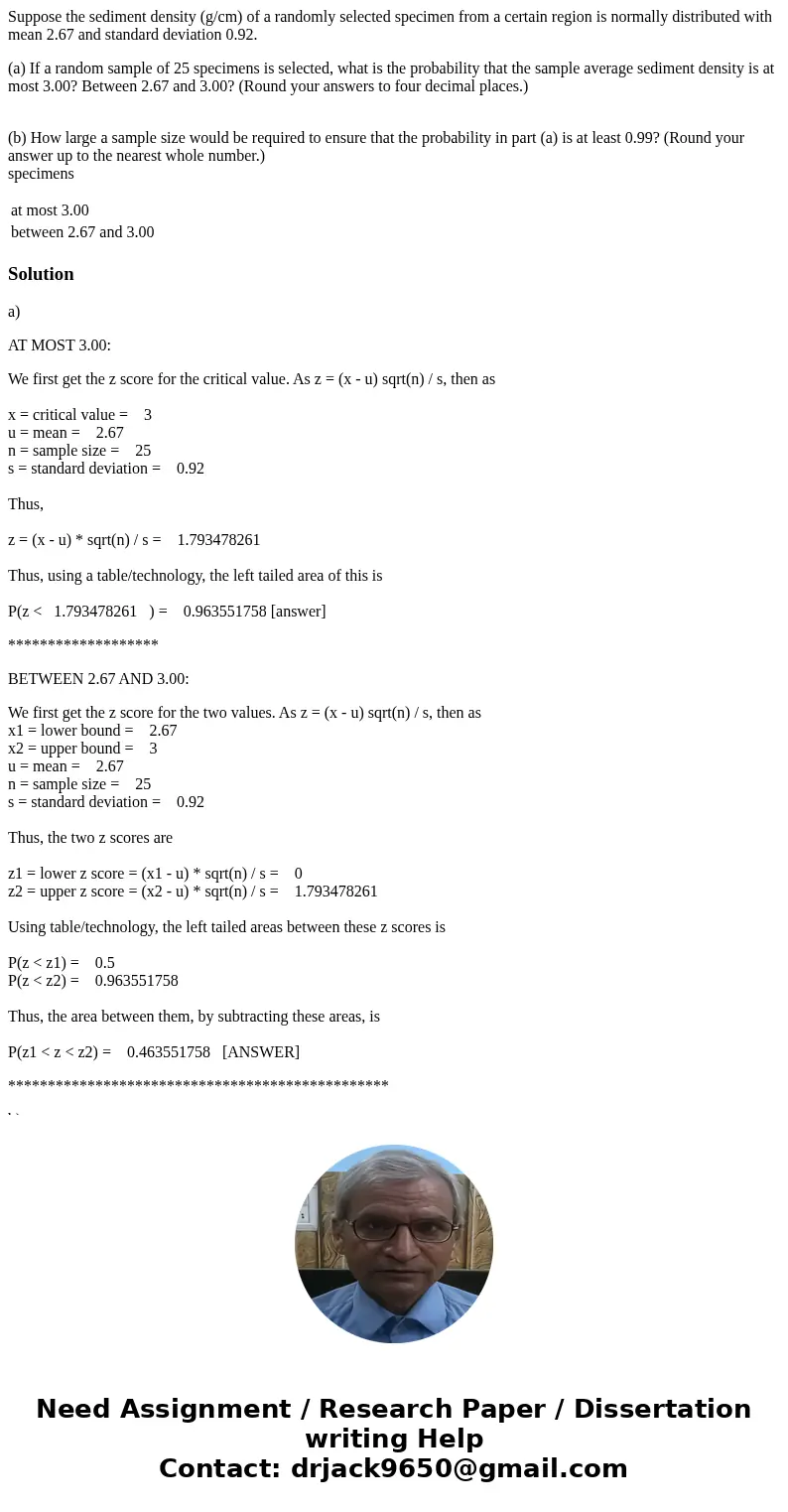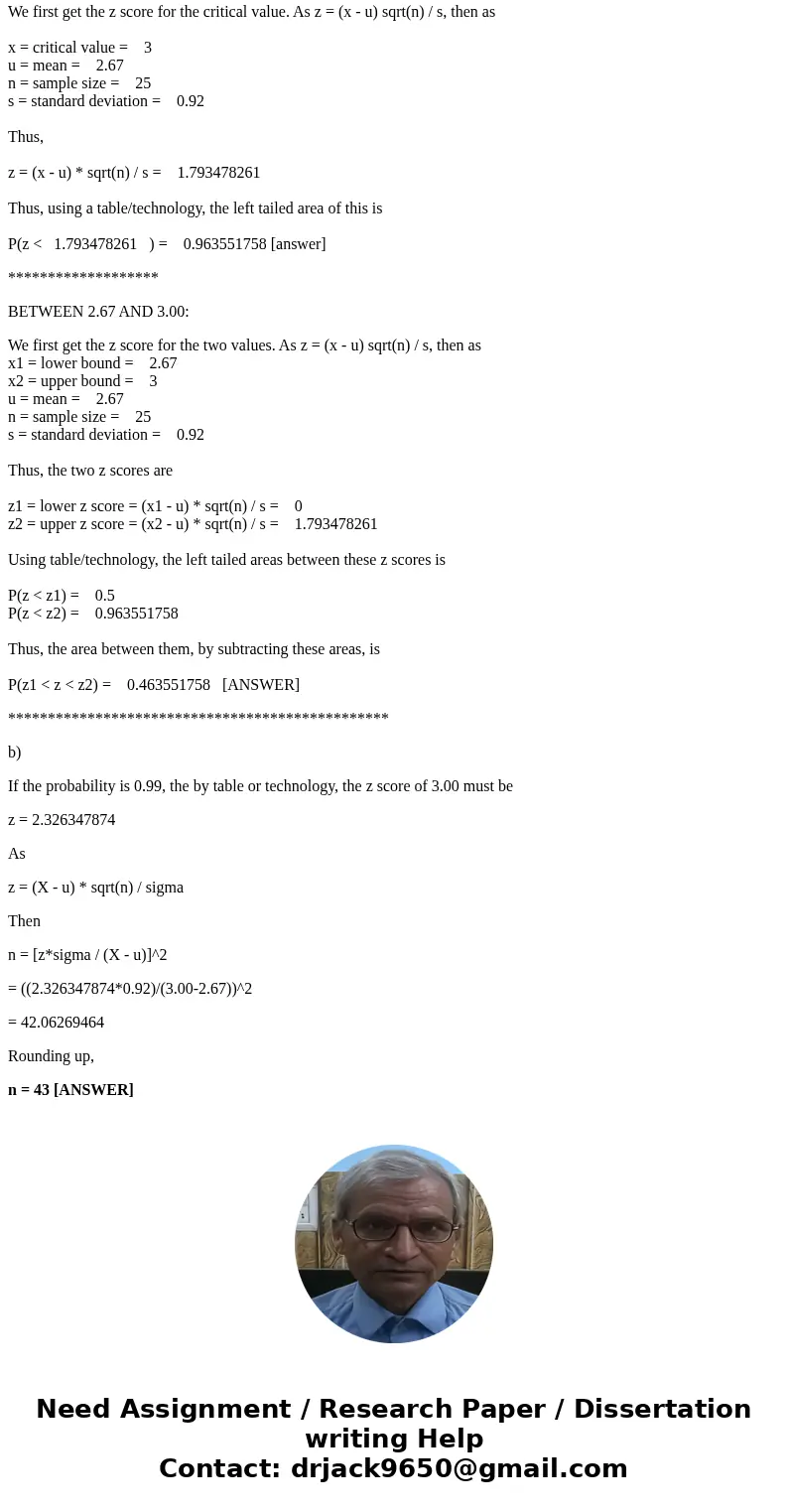Suppose the sediment density gcm of a randomly selected spec
Suppose the sediment density (g/cm) of a randomly selected specimen from a certain region is normally distributed with mean 2.67 and standard deviation 0.92.
(a) If a random sample of 25 specimens is selected, what is the probability that the sample average sediment density is at most 3.00? Between 2.67 and 3.00? (Round your answers to four decimal places.)
(b) How large a sample size would be required to ensure that the probability in part (a) is at least 0.99? (Round your answer up to the nearest whole number.)
specimens
| at most 3.00 | |
| between 2.67 and 3.00 |
Solution
a)
AT MOST 3.00:
We first get the z score for the critical value. As z = (x - u) sqrt(n) / s, then as
x = critical value = 3
u = mean = 2.67
n = sample size = 25
s = standard deviation = 0.92
Thus,
z = (x - u) * sqrt(n) / s = 1.793478261
Thus, using a table/technology, the left tailed area of this is
P(z < 1.793478261 ) = 0.963551758 [answer]
*******************
BETWEEN 2.67 AND 3.00:
We first get the z score for the two values. As z = (x - u) sqrt(n) / s, then as
x1 = lower bound = 2.67
x2 = upper bound = 3
u = mean = 2.67
n = sample size = 25
s = standard deviation = 0.92
Thus, the two z scores are
z1 = lower z score = (x1 - u) * sqrt(n) / s = 0
z2 = upper z score = (x2 - u) * sqrt(n) / s = 1.793478261
Using table/technology, the left tailed areas between these z scores is
P(z < z1) = 0.5
P(z < z2) = 0.963551758
Thus, the area between them, by subtracting these areas, is
P(z1 < z < z2) = 0.463551758 [ANSWER]
************************************************
b)
If the probability is 0.99, the by table or technology, the z score of 3.00 must be
z = 2.326347874
As
z = (X - u) * sqrt(n) / sigma
Then
n = [z*sigma / (X - u)]^2
= ((2.326347874*0.92)/(3.00-2.67))^2
= 42.06269464
Rounding up,
n = 43 [ANSWER]


 Homework Sourse
Homework Sourse